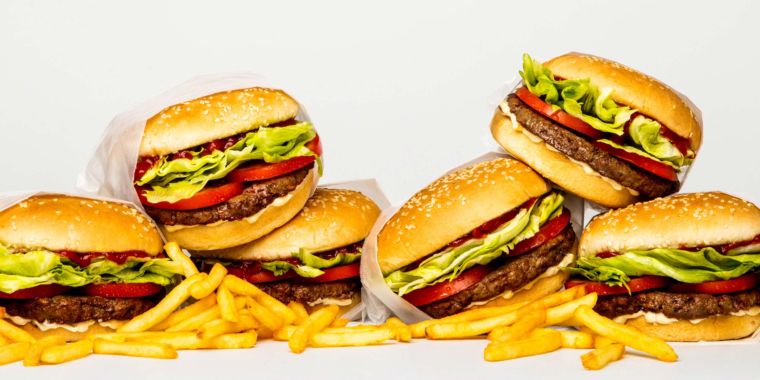Indeed, when independent researchers at Johns Hopkins University decided to get the best estimates they could by combing through the published literature, they found that in the 11 life cycle analyses they turned up, the average greenhouse gas footprint from plant-based meats was just 7 percent of beef for an equivalent amount of protein. The plant-based products were also more climate-friendly than pork or chicken — although less strikingly so, with greenhouse gas emissions just 57 percent and 37 percent, respectively, of those for the actual meats.
Similarly, the Hopkins team found that producing plant-based meats used less water: 23 percent that of beef, 11 percent that of pork, and 24 percent that of chicken for the same amount of protein. There were big savings, too, for land, with the plant-based products using 2 percent that of beef, 18 percent that of pork, and 23 percent that of chicken for a given amount of protein. The saving of land is important because, if plant-based meats end up claiming a significant market share, the surplus land could be allowed to revert to forest or other natural vegetation; these store carbon dioxide from the atmosphere and contribute to biodiversity conservation. Other studies show that plant-based milks offer similar environmental benefits over cow’s milk.
…
Soy milk, for example, requires just 7 percent as much land and 4 percent as much water as real milk, while emitting only 31 percent as much greenhouse gas. Oat milk needs 8 percent of the land and 8 percent of the water, while releasing just 29 percent as much greenhouse gas. Even almond milk often regarded as a poor choice because almond orchards guzzle so much fresh water—uses just 59 percent as much water as real milk.
But not all plant-based milks deliver the same nutrient punch. While soy milk provides almost the same amount of protein as cow’s milk, almond milk provides only about 20 percent as much—an important consideration for some. On a per-unit-protein basis, therefore, almond milk actually generates more greenhouse gas and uses more water than cow’s milk.



Removed by mod
Ok bud, please substantiate your extraordinary claims with some peer reviewed studies in known journals. Otherwise I’ll have to delete your comments
The extraordinary claim is that a diet that no culture on earth has ever had and fake meat is more environmentally friendly that a diet that includes ruminant meats. If there is a specific claim I made you are confused about I would be happy to provide a source to educate you.
You have failed to give a substantial answer. Will delete the conversation above.
You have failed to ask for a source for a specific claim. fine ill start my own community and bring the conversation there where it will be modded fairly.
Feel free to do that :)
I found what seems to me a neutral look at the water costs of beef production. https://www.watercalculator.org/footprint/water-footprint-beef-industrial-pasture/ The relevant takeaway for me, is that it is true that grass fed and finished beef has far less impact than feedlot beef… feedlot beef is 99% of the beef produced in the US. It’s great that you put your money into the better of the beef options, but it isn’t representative of typical beef production.
As for my health, I hope it continues to be good! If I were to develop health issues that could only be remedied by eating animal protein, I would do it. The idea is repulsive to me personally, so I hope it doesn’t cone to that. If it did, I would raise a few chickens for eggs. I grew up on a farm and have slaughtered and processed chickens, goats and rabbits. Nasty work.
Nice link. Yeah I’m not saying factory farms are OK, and we should all eat grass fed, grass finished but feed lots are usually only used when they are being finished so I want people to at least be fair about it.